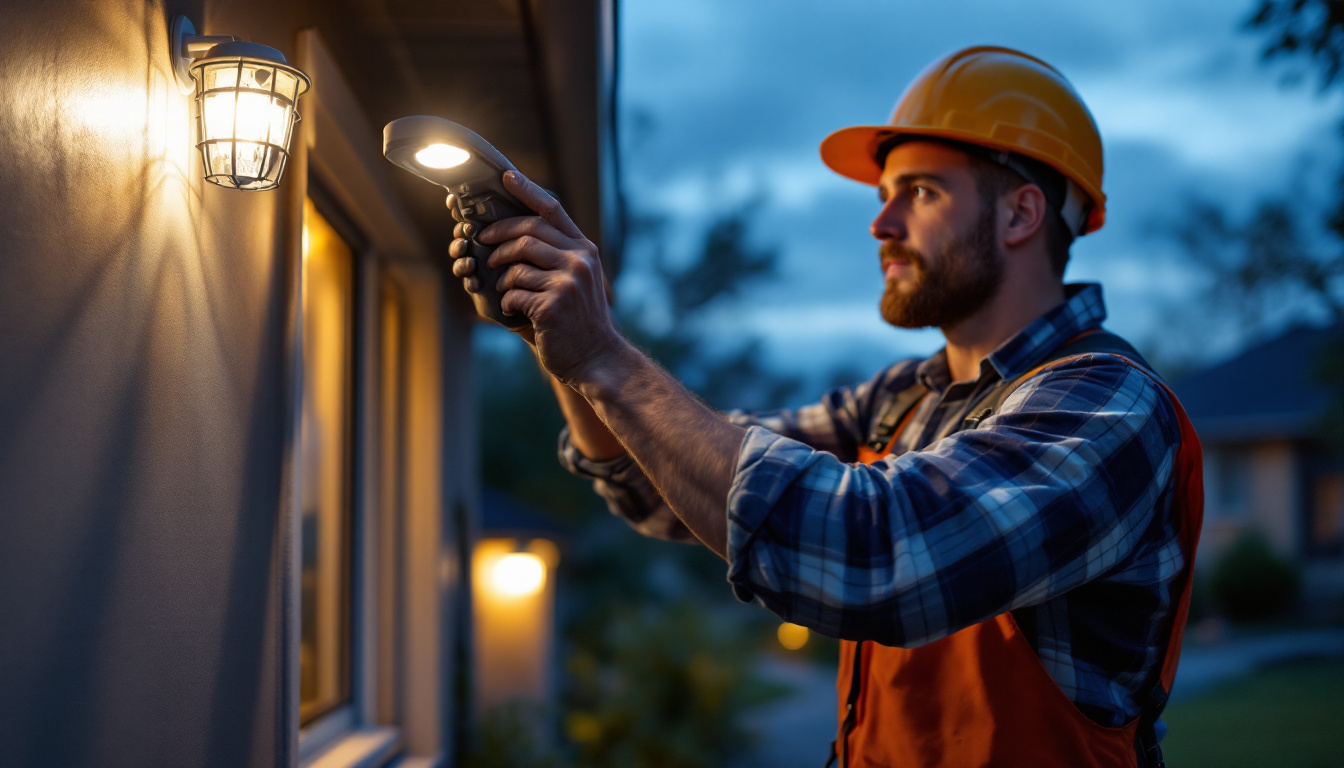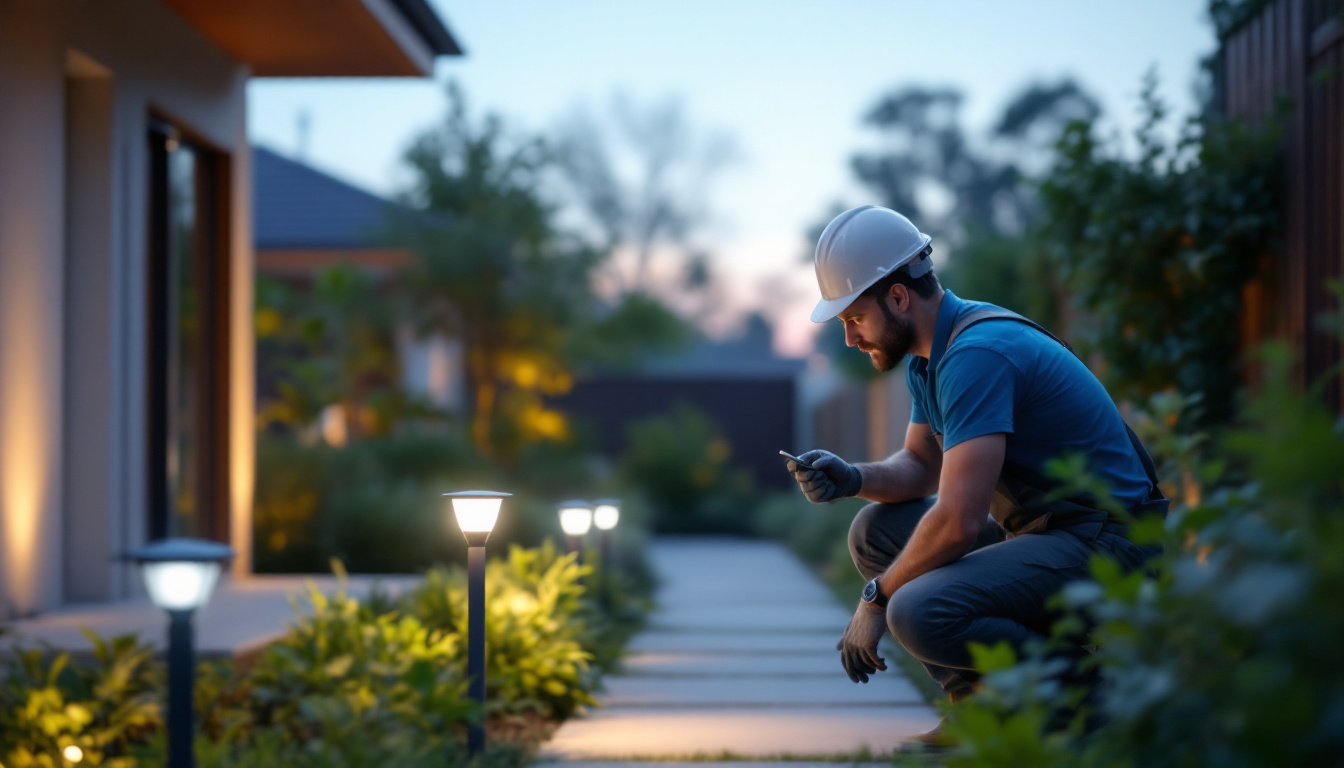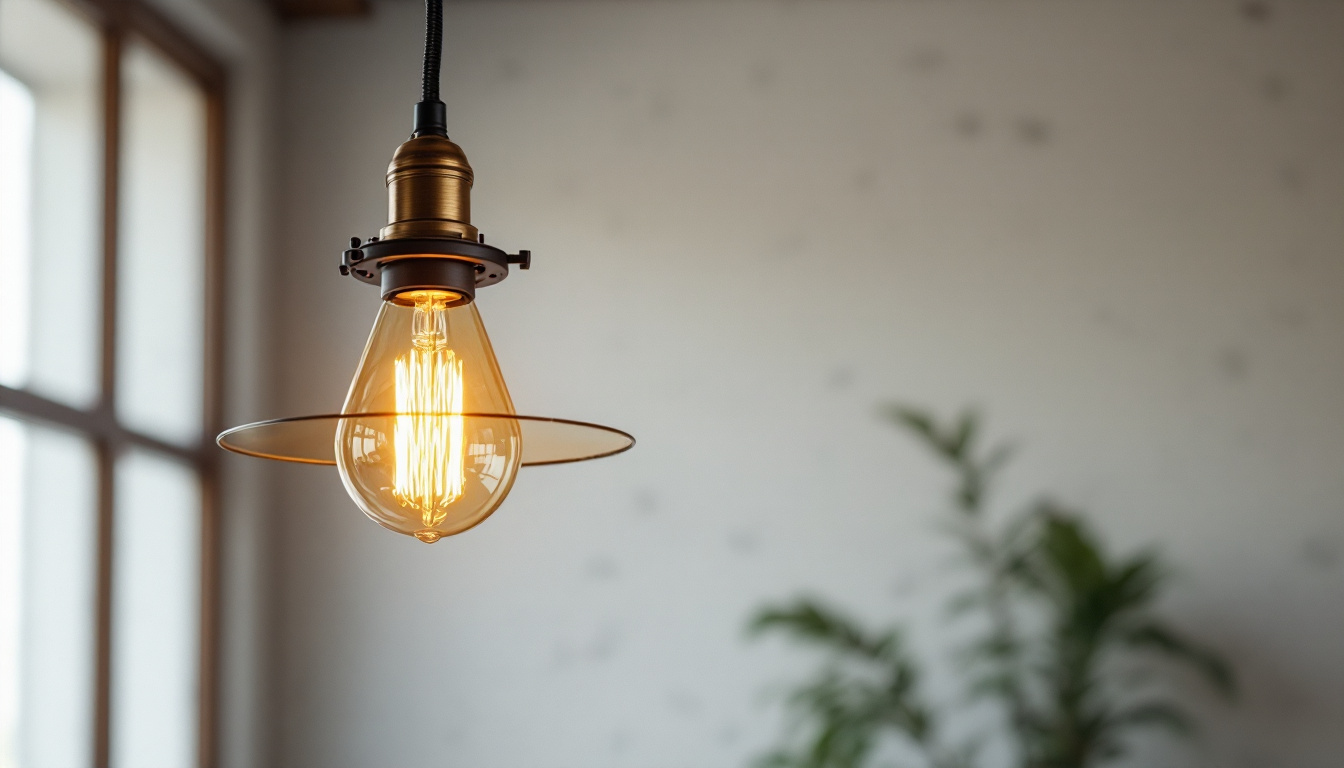

As outdoor lighting continues to evolve, the use of sensor lights has gained popularity among homeowners and businesses alike. These lights not only enhance security but also contribute to energy efficiency. However, for lighting contractors, understanding compliance regulations surrounding outdoor sensor lights is essential. This article delves into what contractors need to know about compliance, installation, and best practices for outdoor sensor lights.
Compliance regulations for outdoor sensor lights can vary significantly based on location, type of installation, and the specific requirements set forth by local authorities. It’s crucial for lighting contractors to familiarize themselves with these regulations to avoid potential legal issues and ensure safety standards are met.
Each municipality may have its own building codes that dictate the type of outdoor lighting that can be installed. These codes often cover aspects such as light intensity, fixture placement, and energy efficiency. Contractors must consult local building departments to ensure that their installations comply with these codes.
Failure to adhere to local codes can result in fines, the need for reinstallation, or even legal action. Therefore, it is advisable for contractors to stay updated on any changes to these regulations and to maintain open communication with local authorities. Additionally, contractors should consider engaging with local community boards or neighborhood associations, as these groups can provide insights into community preferences and concerns regarding outdoor lighting, which may influence compliance requirements.
In addition to building codes, electrical safety standards are critical in the installation of outdoor sensor lights. The National Electrical Code (NEC) provides guidelines that ensure electrical installations are safe and reliable. Contractors should pay particular attention to the requirements for outdoor installations, which often include considerations for moisture, temperature variations, and exposure to the elements.
Ensuring compliance with these safety standards not only protects the contractor from liability but also safeguards the end-user from potential hazards. Regular training and certification updates can help contractors stay informed about the latest electrical safety standards. Furthermore, implementing a thorough inspection process post-installation can help identify any potential issues early on, ensuring that the installation meets all safety and regulatory requirements before the lights are activated.
With a growing emphasis on sustainability, contractors must also consider environmental regulations when installing outdoor sensor lights. Many regions have implemented guidelines aimed at reducing light pollution and conserving energy. This includes using fixtures that minimize glare and direct light only where needed.
Contractors should be aware of the environmental impact of their installations and strive to recommend products that align with eco-friendly practices. This not only enhances the contractor’s reputation but also meets the expectations of environmentally conscious clients. Additionally, utilizing smart technology in outdoor sensor lights can further contribute to energy conservation by allowing for adaptive lighting that adjusts based on surrounding conditions and usage patterns, thereby reducing unnecessary energy consumption and extending the lifespan of the fixtures.
Selecting the appropriate outdoor sensor lights is crucial for successful installations. Contractors should consider various factors, including the type of sensor, light output, and energy efficiency. Understanding these elements can help ensure that the chosen products meet compliance standards and client expectations.
Outdoor sensor lights typically utilize one of several types of sensors, including motion sensors, photocells, and timers. Motion sensors activate the light when movement is detected, making them ideal for security purposes. Photocells, on the other hand, automatically turn the lights on at dusk and off at dawn, providing convenience and energy savings.
Contractors should evaluate the specific needs of the installation site to determine which type of sensor is most appropriate. For example, areas with high foot traffic may benefit from motion sensors, while residential properties may prefer photocells for ease of use. Additionally, some advanced systems combine multiple sensor types, allowing for greater flexibility and enhanced functionality, such as lights that can be set to activate based on both motion and ambient light levels.
Another critical factor in selecting outdoor sensor lights is the light output, measured in lumens. Contractors should assess the area that needs illumination to determine the appropriate brightness level. Additionally, energy-efficient options, such as LED lights, are increasingly popular due to their lower energy consumption and longer lifespan.
Choosing energy-efficient lighting not only complies with many local regulations but also appeals to clients looking to reduce their energy bills. Contractors should be prepared to explain the benefits of these options to clients who may be unfamiliar with the latest advancements in lighting technology. Furthermore, it is essential to highlight that modern LED lights often come with adjustable brightness settings, allowing clients to customize the light output based on their specific needs and preferences, which can be particularly useful for outdoor gatherings or events.
While functionality is paramount, the design and aesthetics of outdoor sensor lights should not be overlooked. Many clients prioritize the visual appeal of their outdoor spaces, and the right fixtures can enhance the overall look of a property.
Contractors should offer a variety of design options, from sleek modern fixtures to more traditional styles, to cater to different client preferences. Additionally, considering the landscape and architecture of the property can help in selecting fixtures that complement the surroundings. For instance, fixtures designed with weather-resistant materials not only provide durability but can also be stylishly integrated into garden designs, enhancing the natural beauty of outdoor spaces. It is also worth noting that some fixtures come with customizable color temperatures, allowing clients to choose between warm and cool light tones, which can dramatically affect the ambiance of their outdoor areas.
Proper installation of outdoor sensor lights is essential for ensuring compliance and functionality. Following best practices can help contractors avoid common pitfalls and deliver high-quality results to their clients.
Before installation, a thorough site assessment is crucial. This includes evaluating the area for potential obstructions, determining the optimal placement of fixtures, and identifying the best power sources. Understanding the layout of the property can help contractors make informed decisions about where to install sensor lights for maximum effectiveness.
Additionally, assessing the surrounding environment can help identify potential issues, such as trees or structures that may block light or interfere with sensor functionality. A well-planned installation can save time and resources in the long run.
When it comes to wiring and connections, adherence to electrical codes is non-negotiable. Contractors should ensure that all wiring is properly rated for outdoor use and protected from environmental factors. Using weather-resistant connectors and conduits can help prevent damage and ensure long-lasting performance.
Furthermore, double-checking all connections before finalizing the installation can help prevent future issues. Ensuring that all components are securely connected and functioning correctly is essential for the reliability of the sensor lights.
After installation, testing the sensor lights is a critical step that should not be overlooked. This includes checking the sensor’s responsiveness, light output, and overall functionality. Adjustments may be necessary to ensure that the lights operate as intended, especially in relation to the sensor’s sensitivity and the timing settings.
Contractors should also provide clients with instructions on how to operate and adjust the sensor lights, empowering them to make changes as needed. A well-informed client is more likely to be satisfied with the installation and may even recommend the contractor to others.
Maintenance is an often-overlooked aspect of outdoor sensor lights, yet it plays a significant role in ensuring their longevity and effectiveness. Lighting contractors should educate clients on the importance of regular maintenance and offer services to assist with this process.
Encouraging clients to conduct regular inspections of their outdoor sensor lights can help identify potential issues before they become significant problems. This includes checking for dirt or debris on the sensors, which can impede functionality, as well as inspecting the fixtures for signs of wear or damage.
Contractors can provide a checklist for clients to follow during these inspections, making it easier for them to keep track of maintenance tasks. Regular inspections can extend the lifespan of the lights and ensure they continue to operate efficiently.
Outdoor sensor lights are exposed to the elements, which can lead to dirt buildup and corrosion over time. Contractors should recommend that clients clean their fixtures periodically, using appropriate cleaning solutions that won’t damage the materials.
Additionally, advising clients on how to protect their lights from harsh weather conditions can prevent premature wear. For example, using protective covers during extreme weather can help preserve the integrity of the fixtures.
As technology advances, older sensor lights may become outdated or less efficient. Contractors should stay informed about the latest developments in outdoor lighting technology and offer clients options for upgrading their systems when necessary.
Upgrading to newer models can enhance energy efficiency, improve functionality, and provide clients with the latest features, such as smart technology integration. This not only benefits the client but also positions the contractor as a knowledgeable and forward-thinking professional in the industry.
In conclusion, outdoor sensor lights offer significant benefits in terms of security and energy efficiency. However, lighting contractors must navigate a complex landscape of compliance regulations, product selection, installation best practices, and maintenance considerations to ensure successful installations. By staying informed and prioritizing quality, contractors can enhance their reputation and provide exceptional service to their clients.
As the demand for outdoor sensor lighting continues to grow, those who embrace compliance and best practices will find themselves at the forefront of the industry, ready to meet the evolving needs of their clients.
Ready to elevate your lighting projects with the highest quality outdoor sensor lights? Look no further than LumenWholesale, where we provide contractors with spec-grade lighting products at unbeatable wholesale prices. Our selection is designed to meet the most rigorous industry standards, ensuring you deliver reliable and high-performance lighting solutions. With free shipping on bulk orders, you can trust that you’re getting the best value without any hidden fees. Don’t compromise on quality or cost. Experience the convenience and affordability of LumenWholesale by visiting our extensive collection today. Wholesale Lighting at the Best Value.

Discover essential insights for lighting contractors on harnessing solar power to illuminate spaces efficiently.

Discover how industrial style hanging lights can transform your space with their unique blend of functionality and aesthetics.

Discover how industrial style pendant light fixtures are revolutionizing the lighting industry.

Discover essential best practices for lighting contractors working with T8 LED technology.
Get notified when NEW deals are released.
Optimize your budget with wholesale discounts.
Only top-quality, specification-grade lighting products.
No additional costs at checkout - what you see is what you pay.
We understand the unique needs of contractors.